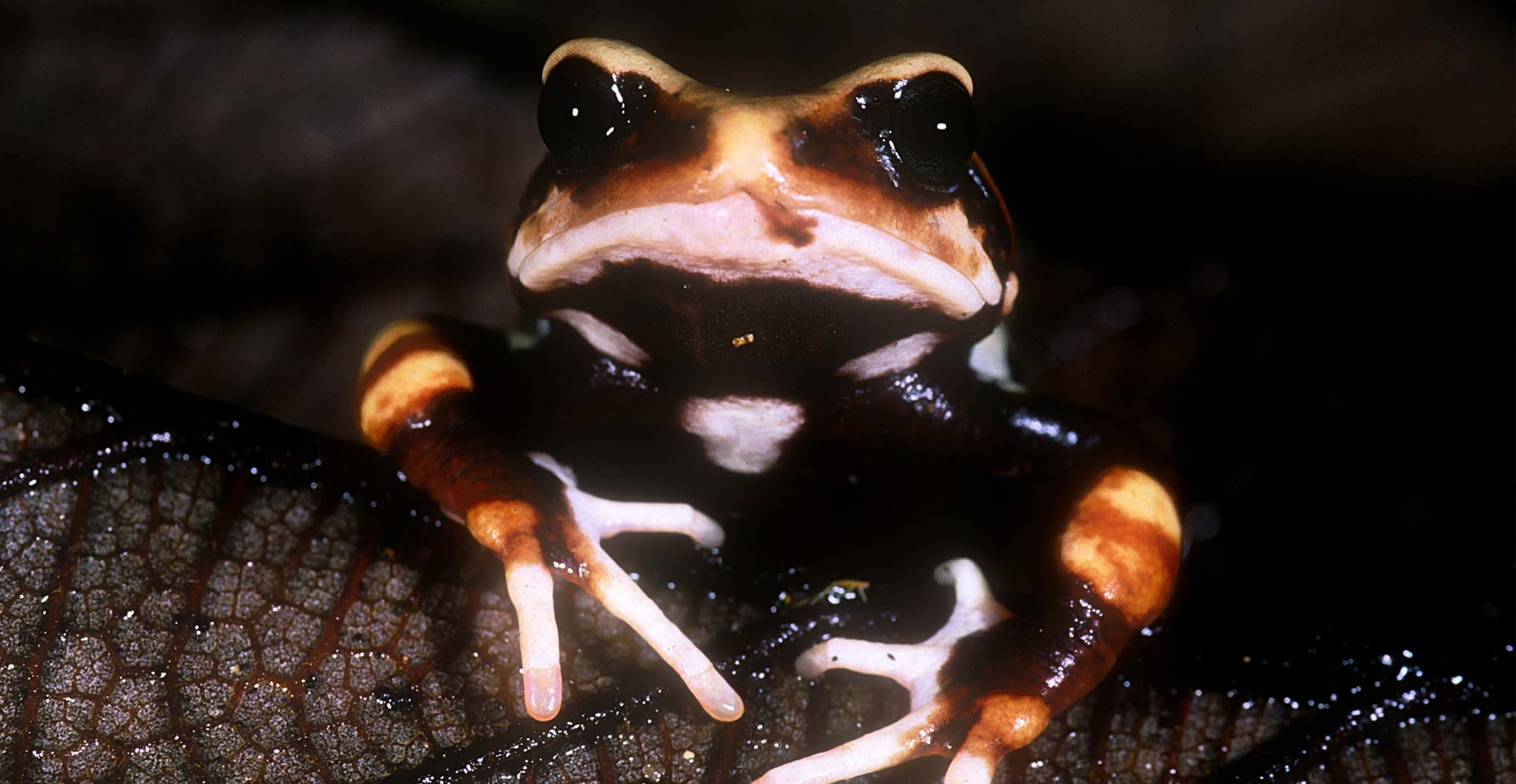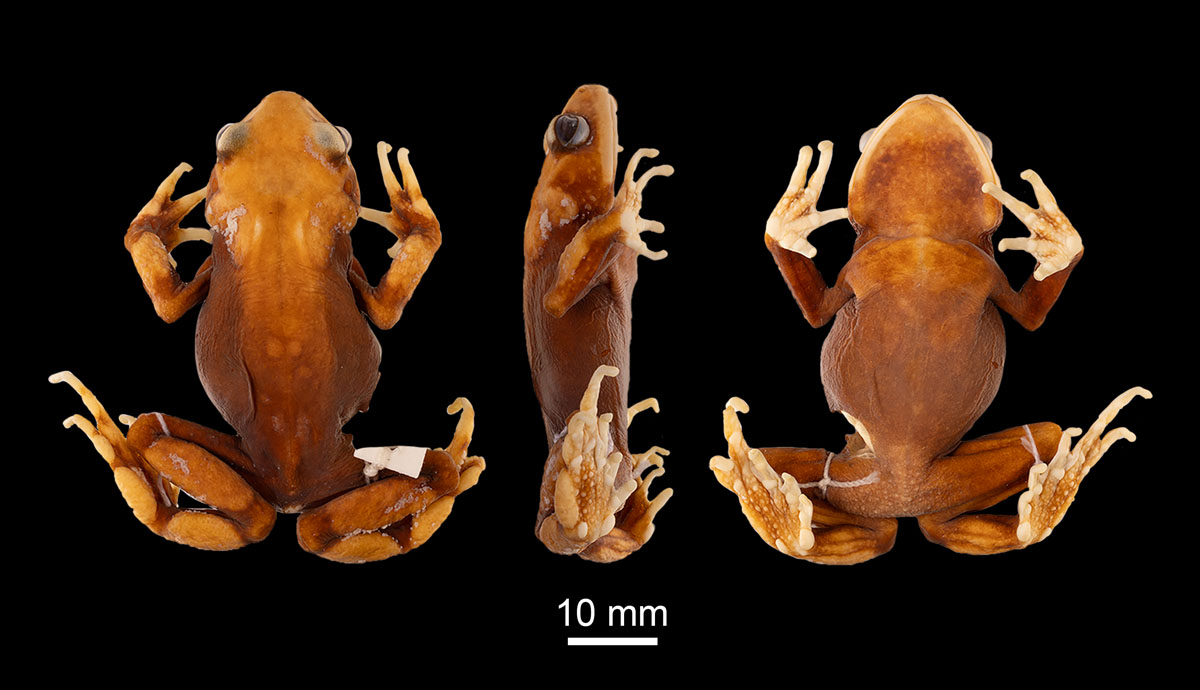A group of tree-dwelling toads that give birth to live young have been discovered.
Although these toads dwell high in the mountain forests of Tanzania, museum specimens have helped reveal a hidden diversity among these unique amphibians.

Three new species of tree toads have been described by scientists. © Michele Menegon
A group of tree-dwelling toads that give birth to live young have been discovered.
Although these toads dwell high in the mountain forests of Tanzania, museum specimens have helped reveal a hidden diversity among these unique amphibians.
Scientists have uncovered three new toad species that have been hiding in plain sight.
These hauntingly beautiful tree toads from Tanzania’s Eastern Arc Mountains have an unusual way of reproducing. Unlike many other frogs and toads, they give birth to live young rather than lay eggs.
A description of the three latest additions has been published in the journal Vertebrate Zoology. They are now called Nectophrynoides saliensis, Nectophrynoides uhehe and Nectophrynoides luhomeroensis.
All frogs in this genus were originally thought to belong to a single species first described from Tanzania’s Southern Highlands in 1905. But cutting-edge genomic sampling has helped reveal that there are actually multiple species.
In this latest study, researchers revisited museum collections that held Nectophrynoides species. They extracted DNA from over 250 specimens, including some that were over a century old. Comparing this with data on body size and shape, and differences in their mating calls, led scientists to name the three new species.
Christian Thrane from the University of Copenhagen and author of the study, says, “Phylogenetic work from a few years ago had already let us know there was previously unrecognised diversity among these toads.”
“But by travelling to different natural history museums and examining hundreds of preserved toads, I was able to get a better idea of their morphological diversity, so we could describe these new species.”

DNA samples taken from museum specimens helped scientists to discover the new species.
Many of us think of frogs and toads reproducing by laying spawn in water, which then develops into tiny tadpoles before finally metamorphosing into their adult form.
But some species do things a little differently. When in 1905 German zoologist Gustav Tornier described the first Tanzanian tree toad, Nectophrynoides viviparus, it changed everything we thought we knew. It was the first species of frog or toad known to give birth to live young.
Scientists now believe that skipping the tadpole phase enables these frogs to reproduce away from water. Each new species of Nectophrynoides has since been found to share this live-bearing strategy.
But tree toad species aren’t the only amphibians that are known to do this. The Nimba toad, called Nimbaphrynoides occidentalis, is a closely related species that also gives birth to live young, as do a handful of other frogs from South America and Southeast Asia.
But live-bearing is still exceptionally rare in this group of animals, with fewer than 1% of frogs and toads known to do it. This makes these newly described amphibians especially interesting to researchers.

The toads live in the mountain forests of Tanzania's Eastern Arc Mountains. © Michele Menegon
The Eastern Arc Mountains stretch for hundreds of kilometres across Tanzania and into Kenya.
This extensive mountain range is one of the most biodiversity-rich places on the planet. Many of its peaks are home to species that have evolved in isolation. Because of this, the Eastern Arc Mountains are home to a considerable number of animals and plants that are found nowhere else on Earth.
But despite the significance of the mountains, the forests that blanket the peaks are rapidly disappearing. Most of the tree toads are already on the brink of extinction, with one species in the Nectophrynoides genus already extinct in the wild, and another has not been seen since it was first discovered in 2003.
The newly described species are restricted to small forest patches, making them vulnerable to further deforestation and climate change. Naming and defining these species will help in the efforts to conserve them, but there are concerns that more unnamed species are waiting to be discovered in the rapidly dwindling forests.
Dr Simon Loader, our Principal Curator and expert in amphibians, was one of the authors on the paper.
“These discoveries underscore the diversity of live-bearing toads, as well as the importance of protecting East Africa’s forests,” says Simon.
“If we lose these forests, we will lose one of the most unusual forms of amphibian reproduction known. And only by continuing to explore these poorly known areas, and protecting them, can we gain a more complete picture of the diversity they harbour, and ensure that it is around for future generations to study.”

We're working towards a future where both people and the planet thrive.
Hear from scientists studying human impact and change in the natural world.
Don't miss a thing
Receive email updates about our news, science, exhibitions, events, products, services and fundraising activities. We may occasionally include third-party content from our corporate partners and other museums. We will not share your personal details with these third parties. You must be over the age of 13. Privacy notice.
Follow us on social media